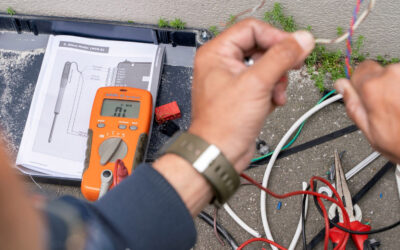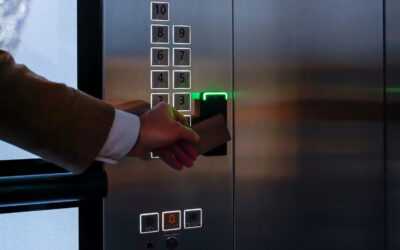Embarking on a commercial electrical fitout is a nuanced venture that demands a blend of technical acumen, foresight, and a meticulous adherence to New Zealand’s regulatory landscape. A well-executed fitout not only forms the backbone of a commercial establishment’s operational efficiency but also significantly elevates its safety standards. In the bustling commercial sector of New Zealand, ensuring a precise and well-planned electrical fitout is not a mere regulatory compliance but a critical investment into the long-term viability and safety of the business premises.
Commercial electrical fitouts encompass a broad spectrum of installations including electrical wiring, lighting, data systems, and other related electrical components crucial for the daily operations of a commercial establishment. Whether it’s a retail store, an office building, or a restaurant, each type of commercial space has unique electrical needs that require a customised solution. Engaging in a well-planned electrical fitout ensures that the commercial space not only meets the current operational needs but is also primed for future scalability and technological upgrades.
The journey towards a robust commercial electrical fitout begins with a thorough understanding of the business’s electrical needs. This encompasses evaluating the power requirements essential for the daily operations, and how they align with the budget and fitout plans. The fitout plan should be meticulously crafted to embody efficiency, safety, and adherence to the local standards and regulations governing commercial electrical installations in New Zealand.
As our Managing Director Tristan Bailey, likes to highlight, “A successful commercial electrical fitout is more than just wiring and lights; it’s about integrating solutions that are aligned with the business goals, compliant with New Zealand regulations, and primed for future scalability.”
Through this blog post, we aim to guide you through the essential steps to efficiently plan a commercial electrical fitout, ensuring that your commercial space is well-equipped to meet the demands of today’s dynamic business environment in New Zealand.

Understanding Local Regulations and Hiring Qualified Electricians
The process of executing a commercial electrical fitout in New Zealand is intricately tied to a robust regulatory framework designed to uphold safety, quality, and efficiency standards. Adherence to these regulations is not just about compliance, but about ensuring the long-term safety and operational efficiency of the commercial establishment.
Adherence to Local Regulations and Standards:
All electrical installations and works in New Zealand must comply with fundamental safety requirements as stipulated in the Electrical (Safety) Regulations 2010. A significant part of these regulations is embodied in the New Zealand Wiring Rules AS/NZS3000:2007, which is a critical document that electrical professionals should be familiar with. The Electrical Workers Registration Board (EWRB) provides access to all the necessary standards for electrical installations and appliances, ensuring that all licensed electrical workers can easily adhere to the prevailing standards.
Hiring Certified Electricians:
Engaging certified electricians is a crucial step in ensuring that the commercial electrical fitout is carried out to the highest standards of quality and safety.
Certified electricians in New Zealand are vetted by local authorities such as the Electrical Contractors Association of NZ, having gone through a stringent auditing process to ensure compliance with the highest standards. Once accepted, they are bound to abide by strict codes of conduct and service.
The expertise of a qualified electrician extends beyond mere technical knowledge. They are extensively trained in safety procedures, ensuring the safety of both themselves and others in the vicinity during the course of the electrical work. This training is crucial in mitigating risks associated with electrical installations, both during the work and after the project is completed.
A certified electrician’s competence is crucial in ensuring that the job is done correctly. Their qualification guarantees that they possess all the relevant skills necessary to deliver optimal results. This level of competence is indispensable in avoiding potential future issues that could arise from substandard electrical work.
Qualified electricians are well-versed in the local regulations and standards governing electrical work in New Zealand. Their knowledge ensures that all electrical work complies with the necessary rules, thus averting the risk of non-compliance which could necessitate costly rectifications in the future.
By understanding the local regulations and ensuring the engagement of certified electricians, the path towards an efficient and compliant commercial electrical fitout becomes significantly smoother. This approach not only aligns with the legal framework but significantly contributes to the safety, efficiency, and long-term operational effectiveness of the commercial establishment.
Assessing Electrical Needs and Creating a Detailed Plan:
Embarking on a commercial electrical fitout necessitates a thorough understanding of the electrical needs of the space in question. Initially, it’s pivotal to gauge the power requirements encompassing lighting, heating, cooling, and the operational power needs for equipment. Tools like the Business Electricity Needs Worksheet could serve as invaluable resources in understanding these power needs.
Future-proofing is another critical aspect to consider. The electrical system should be scalable to cater to future growth, technological advancements, or changes in operational dynamics.
Creating a detailed plan is the subsequent pivotal step. This plan should be crafted in collaboration with certified electricians to ensure adherence to New Zealand’s stringent electrical standards and regulations. A comprehensive plan encapsulates the electrical layout, the types of fixtures and fittings needed, and how the system will be maintained to ensure longevity and efficiency. This meticulous planning phase sets the foundation for a seamless execution of the commercial electrical fitout, paving the way for a safe and efficient operational environment.


Budgeting and Selecting Quality Materials
Budgeting is a crucial aspect of planning a commercial electrical fitout. It’s essential to have a clear budget to manage costs effectively. In New Zealand, a hard fit out can range between $800 and $2500 per square metre depending on the complexity and quality of finishes, with some projects escalating up to $6000 per square metre. Various factors influence these costs, and understanding them is pivotal. Tools like the Office Fit Out Cost Guide can assist in real estate decision-making concerning fitouts, providing an indication of construction costs across key cities in the APAC region, including New Zealand.
When budgeting, considering the cost of non-structural items like electrical cabling is crucial as they form a significant part of the fitout costs. It’s also wise to consider market trends and potential supply, market, and resource pressures that might affect the cost and quality of materials.
Selecting quality materials is another vital aspect. All wiring materials must comply with relevant standards, and supplier declarations of conformity (SDoCs) should be available where required. All suppliers and manufacturers of electrical products in New Zealand must ensure their products are safe, which includes meeting essential standards and showing regulatory compliance marks.
Creating a realistic budget and selecting high-quality materials compliant with New Zealand standards are fundamental steps towards ensuring the success of a commercial electrical fitout. These actions contribute to the safety, efficiency, and long-term viability of the commercial space, aligning with both legal and operational requisites.
Implementing, Testing, and Ensuring Compliance
The pathway to an effective commercial electrical fitout moves through critical stages of implementation, rigorous testing, and ensuring strict compliance with New Zealand’s electrical standards and regulations. Each of these stages is vital to ensuring the safety, functionality, and efficiency of the electrical installations within the commercial space.
During the implementation phase, a well-defined management structure is crucial. Assigning a Project Manager to oversee the entire project ensures a coordinated approach, especially during the installation phase. The Project Manager’s responsibilities include ensuring the availability of necessary personnel and equipment on-site, confirming the accuracy of service set outs prior to installation, ensuring the timely delivery and availability of fittings and fixtures, and implementing contingency plans in case of unforeseen delays. This structured approach to project management ensures the highest possible quality and timeliness of the installation portion of the project.
Establishing strong relationships with reliable and respected suppliers of materials, fixtures, and equipment is another pivotal aspect of the implementation phase. Engaging reputable suppliers ensures the quality and timely supply of essential items, which in turn, contributes to the smooth progression of the project.
Once the implementation phase is nearing completion, the focus shifts to testing. Electrical testing and tagging need to be conducted in line with the AS/NZS 3760 standard, which outlines the in-service safety inspection and testing of electrical equipment. Employing qualified engineers to perform fixed electrical inspections and testing ensures that the installations are compliant and meet the insurer’s requirements.
Ensuring compliance is the final, yet a critical stage in this journey. All electrical products and installations must meet the fundamental safety provisions as stipulated by the Electricity Act 1992 and the Electricity (Safety) Regulations 2010. This includes obtaining the necessary approvals and/or a Supplier Declaration of Conformity (SDoC) for high-risk and medium-risk products before they are offered for sale or supplied. Adherence to recognised safety standards is verified through test reports from recognised testing laboratories, showcasing compliance with New Zealand’s Electrical Safety Standards.
Maintaining a comprehensive documentation of the project, right from implementation to compliance certification, is essential. This documentation should be readily available upon completion of the project, showcasing adherence to all regulatory requirements and standards, thus ensuring a smooth transition to the operational phase of the commercial space.
Through a diligent approach encompassing meticulous implementation, thorough testing, and strict adherence to compliance protocols, the pathway to a successful commercial electrical fitout is significantly smoothened, ensuring the commercial space is well-equipped to function efficiently and safely.





